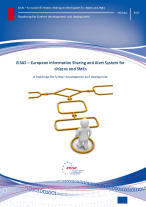
This document marks the first report on the state of cybersecurity in the Union, adopted by ENISA in cooperation with the NIS Cooperation Group and the European Commission, in accordance with Article 18 of the Directive (EU) 2022/2555 (…
This document marks the first report on the state of cybersecurity in the Union, adopted by ENISA in cooperation with the NIS Cooperation Group and the European Commission, in accordance with Article 18 of the Directive (EU) 2022/2555 (…
Seven prime cybersecurity threats were identified in 2024, with threats against availability topping the chart and followed by ransomware and threats against data, and the report provides a relevant deep-dive on each one of them by analysing…
This study highlights the complexities behind the notion of cyber crisis and the degree of subjectivity it involves. The elevation of a large-scale cyber incident into a cyber crisis relies predominantly on a political decision, and depends…
This guide complements the existing set of ENISA guides that support Computer Emergency Response Teams. It describes good practices and provides practical information and guidelines for the management of network and information security incidents…
This Good Practice Guide on Cooperative Models for Effective Public Private Partnerships (PPPs) classifies PPPs for security and resilience and reveals the main five components addressing Why, Who, How, What and When questions associated with…
Given the acknowledged importance of information sharing, this report sets out findings from a research project into the barriers to and incentives for information sharing in the field of network and information security, in the context of peer-…
The ENISA Who-is-Who Directory on Network and Information Security (NIS) contains information on NIS stakeholders (such as national and European authorities and NIS organisations), contact details, websites, and areas of responsabilities or…
Pagination